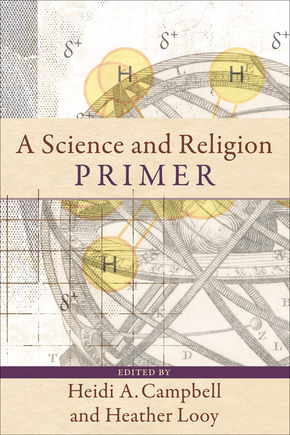A Science and Religion Primer
 Heidi A. Campbell and Heather Looy, eds., A Science and Religion Primer (Grand Rapids: Baker Academic, 2009), 230 pages, ISBN 9780801031502.
Heidi A. Campbell and Heather Looy, eds., A Science and Religion Primer (Grand Rapids: Baker Academic, 2009), 230 pages, ISBN 9780801031502.
Read the title carefully! This book is a “primer.” In the publishing world, that means “a short introduction to a subject.” In this case, the book introduces the reader to the dialogue between science and religion. The book does not defend either position nor attempt to convince you to join any particular side. Instead, this primer is simultaneously an introduction, an encyclopedia, an annotated bibliography, and a survey on the intersection of the two seemingly antithetical disciplines. In this context, the book is not alone. Many other excellent guides to the science and religion dialogue exist that are far more in-depth (e.g. the Science and Religion Encyclopedia or The Oxford Handbook on Science and Religion) or even available online (e.g. the websites of the Metanexus Institute or the Counterbalance Network). But the former are very expensive and the latter only accessible with a computer; most of them require extensive preliminary knowledge of the subject matter. This is the point where A Science and Religion Primer stands out as an affordable and practical resource for anyone interested in the topic and as a handy companion to those who need guidance while reading other texts in the vast arena of the subject.
Pentecostals cannot afford to remain distant observers in the science and religion dialogue.

Heidi A. Campbell is assistant professor of communication at Texas A&M University.
The main part of the book consists of an alphabetical listing of entries that discuss a variety of concepts related to the science and religion dialogue from historical, philosophical, scientific, and theological perspectives, including key figures and important events. Each entry is divided into three parts: a definition of the concept, a summary of the key points and significant issues, and a section with resources. Here, the reader finds information from Altruism to the Verification Principle, on significant figures like Isaac Newton or Albert Einstein, on concepts like evolution and miracles, or on fields like natural philosophy and quantum mechanics.
The essays and encyclopedic entries are well-written and clear. Although kept intentionally short, the introductions are informative and highlight a number of important issues in the dialogue of science and religion in a balanced view that favors neither side. The heart of the text is undoubtedly the encyclopedic section, covering more than three quarters of the book. The entries are short and to the point, and the annotated bibliography at the conclusion of each entry offers a highly valuable entry-point for further reading. However, the introduction fails to state the actual motivation for selecting the entries contained in the collection. In a relatively short collection, such as this one, it is not surprising that many topics were not included. The more important question is what fields of interest were left out. From a Pentecostal perspective, the essays and entries show a remarkable lack of emphasis on the blossoming field of pneumatology. The notion of Spirit/spirit and spirituality is almost completely absent from both sections of the book. Entries that could have included particular references to pneumatology, such as “emergence,” “divine action,” or “panentheism,” either fail to make any reference to Spirit/spirit or are not included at all in the collection. In light of the remarkably well-rounded bibliographies included in the book, it is a particularly surprising fact that none of those texts seem to have directed the writers to this significant issue in the science and religion dialogue.
Category: In Depth, Spring 2010


